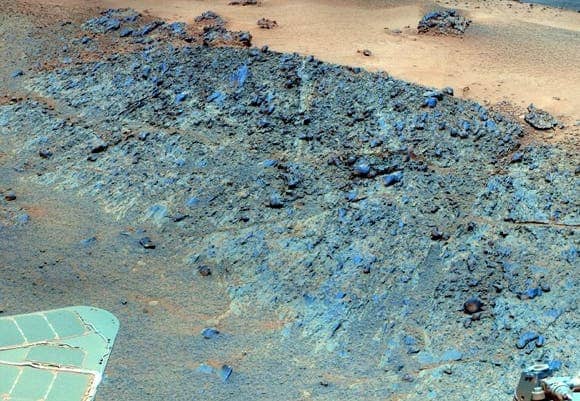
There’s no bigger drag on a busy Monday morning than finding your car under a heap of snow in the driveway. Taking measures and parking it under some kind shelter, if possible, would be advised if you don’t plan on driving an ice truck. Take NASA for instance, which, like every year, has routed the precious Opportunity Rover, currently the only transmitting machinery left on Mars, to sit out through out the Martian winter at the rim of the massive Endeavour crater. And, yes, if you were curious it does snow on Mars!
The place selected by NASA for the sitout is called Greeley Haven, in the memory of the late scientist Ronald Greeley that passed away in October 2011. At the site, Opportunity will be positioned towards the sun-facing slope of the crater to catch the meagre rays of our star on its solar panels. This is the first winter that Opportunity has spent on a slope angling its panels for more collection of sunlight. However, now more than ever, the dust particles collected on top of its solar panels have amounted to a degree such that it makes it necessary for Opportunity to spend the winter there.
Naturally, there’s never a dull day for Opportunity. While parked, it will continue to study rocks near Greeley Haven, collecting and analyzing samples through out the rim of Endeavor. Opportunity, which landed on Mars eight years ago, has driven a total of 21 miles (34 kilometers), and it has taken it three years to reach the crater since it first set its course.
“Greeley Haven provides the proper tilt, as well as a rich variety of potential targets for imaging and compositional and mineralogic studies,” said Jim Bell, lead scientist for the Panoramic Camera (Pancam) on the rover.
“We’ve already found hints of gypsum in the bedrock in this formation, and we know from orbital data that there are clays nearby, too,” he stated.
Greeley Haven, he said, “looks to be a safe and special place that could yield exciting new discoveries about the watery past of Mars.”






